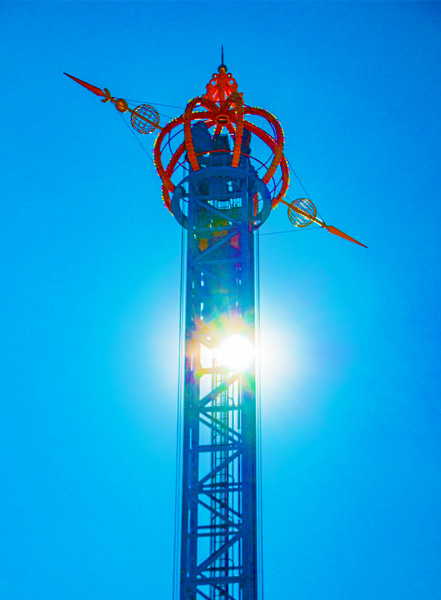Purchasing a drop tower ride is a thrilling investment for any amusement park, but proper planning goes far beyond the ride itself. One of the most critical—and often underestimated—factors is the available space and environmental compatibility. Whether you’re upgrading an outdoor thrill zone or developing an indoor amusement center, understanding site requirements ensures you get the most value from your investment. This article explores how to evaluate and prepare your location before installing a drop tower attraction, especially in environments that already host rides like the pendulum ride or carousel ride.
Assessing the Installation Footprint and Overhead Clearance
Why Size Specifications Can’t Be Overlooked
Drop tower rides (аттракцион башня падения) come in a variety of heights and diameters, and manufacturers often offer different models for indoor and outdoor use. While outdoor rides can stretch over 50 meters tall, indoor versions are usually compact. Regardless of size, each ride requires a designated footprint, plus operational clearance zones for safety, emergency access, and mechanical inspection.
If you’re working with a limited layout, knowing the exact ride dimensions, including the platform, base foundation, and fencing areas, is absolutely crucial. Overlooking even a single meter of clearance could mean costly adjustments later.
Environmental Integration with Existing Attractions
Balancing Thrill Rides with Family Favorites
Many parks want to position their new drop tower ride near popular attractions like the pendulum ride (маятник аттракцион) or carousel ride. That makes sense in terms of visitor flow, but the space between attractions matters just as much. For example, a drop tower creates vertical visual dominance and may cast large shadows during the day, affecting the experience of nearby slower-paced attractions.
Proper spacing allows each ride to maintain its identity and ensures that thrill-seekers and families alike enjoy the environment. If you’re working with a compact layout, consider staggering high-impact rides in a way that distributes crowds rather than bunches them up in one corner of the park.
Indoor vs. Outdoor Drop Tower Locations
Challenges of Ceiling Height and Noise Levels
Installing a drop tower ride indoors comes with a unique set of challenges. First, verify the ceiling height—not just for the ride itself but for the top clearance during operation. Some drop towers use rebound or bounce mechanisms that extend beyond the initial height. Additionally, loud noise from sudden drops and guest reactions can reverberate inside enclosed spaces, so acoustic dampening or sound barriers may be necessary.
On the other hand, outdoor setups require analysis of ground stability, exposure to weather elements, and zoning regulations. Always check local building codes and amusement ride (аттракционы для детей) safety ordinances before moving forward with outdoor installation.
Foundation Preparation and Utility Planning
Understanding Structural Requirements for Heavy Machinery
Drop tower rides are heavy structures that demand solid foundations. The base must be able to support the ride’s weight as well as the stress caused during each drop. Typically, this involves laying a concrete foundation with steel reinforcements. Make sure your location can accommodate the necessary groundwork without compromising underground utilities or nearby attractions.
Additionally, your site must provide the correct electrical capacity, often in 3-phase formats. Insufficient access to electricity could stall operations or require expensive infrastructure upgrades. Check if you can connect to existing power grids or if a dedicated generator is needed.
Optimizing the Guest Experience Through Strategic Placement
Enhancing Viewpoints, Pathways, and Queuing Areas
Beyond physical requirements, consider how the ride fits into the visitor journey. Drop towers offer a bird’s-eye view of the park, so placing them near scenic locations enhances the ride’s appeal. Imagine passengers rising high above a beautiful lake or watching a lit-up carousel ride (аттракцион карусель) at night from above—it turns a moment of thrill into a memorable visual experience.
Also plan for queue lines and exit paths. Drop tower rides can attract large crowds, so design your layout with wide lanes, shaded waiting areas, and nearby rest spots to improve guest satisfaction.
Final Considerations Before Committing to the Ride
Mitigating Future Expansion Constraints
If your long-term plan includes expanding your park or adding new attractions like a pendulum ride, you’ll want to preserve space and flexibility. Avoid placing the drop tower in a way that restricts future construction. Also, talk with your ride manufacturer about modular options or portable bases that allow for future relocation or reconfiguration.
Conclusion: Smart Space Planning Ensures Smooth Operations
Choosing a drop tower ride is a major decision, but ensuring it fits seamlessly within your space is equally important. Whether you operate a large outdoor amusement park filled with thrill rides or a family-focused venue with traditional attractions like the carousel ride, careful site analysis can make or break your project’s success.
From foundational support and ceiling clearance to guest flow and ride harmony, planning for space isn’t just a technical detail—it’s a strategic advantage. And in an industry where visitor experience and safety go hand in hand, that advantage is priceless.

